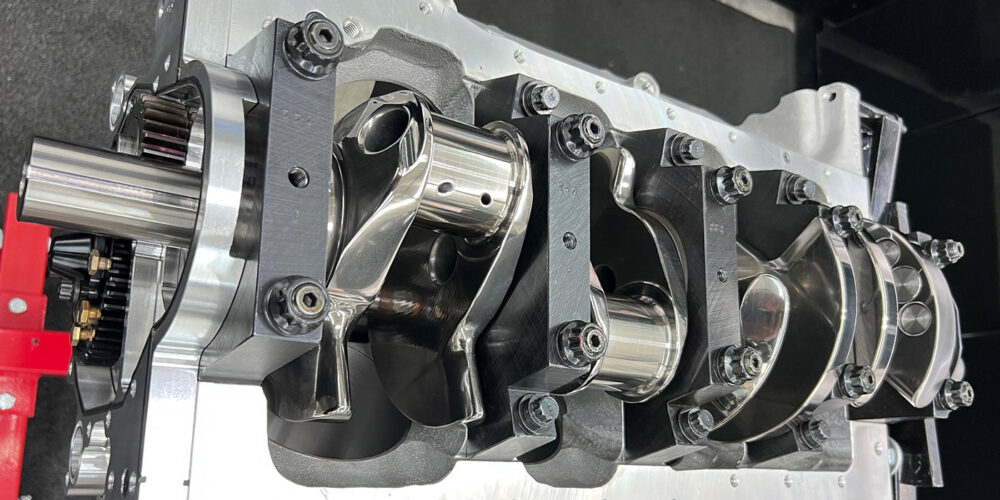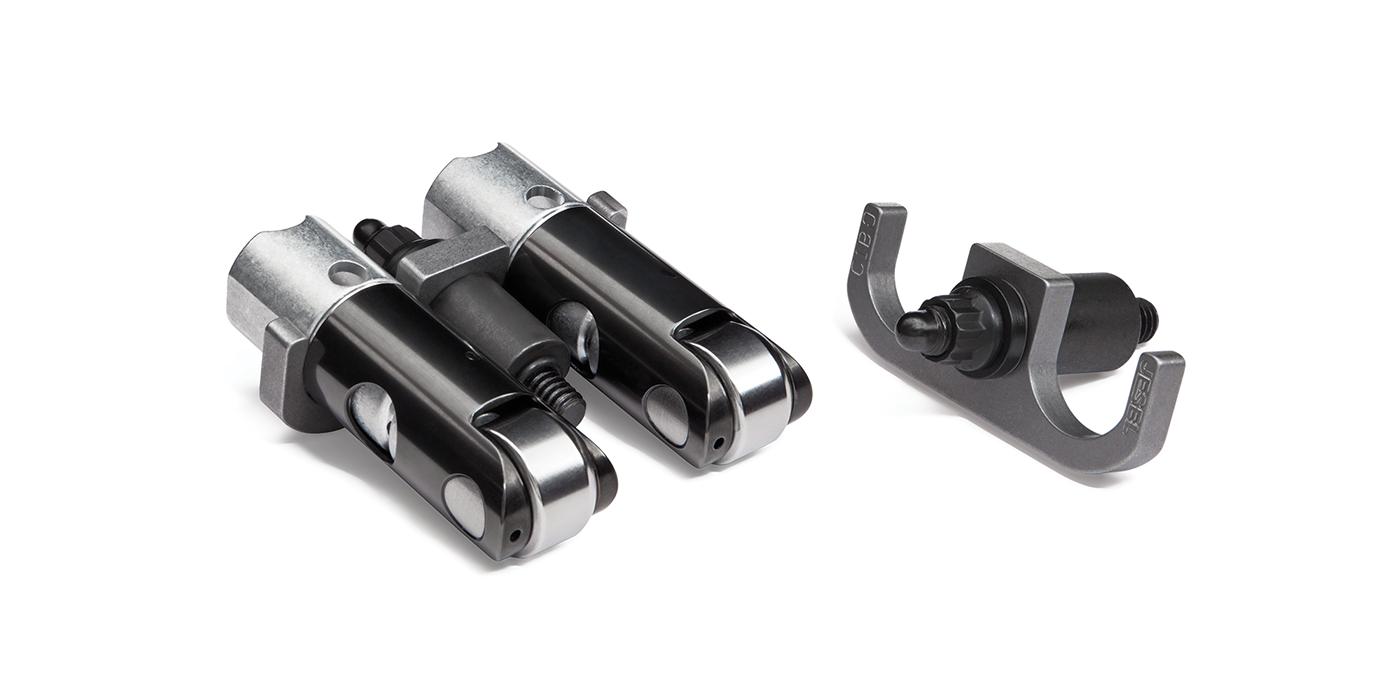Pushrod engines are the preferred choice of many in the performance and racing world because of their simple design and low-end power capability. OHV engines offer many advantages due to their smaller packaging and larger displacements compared to their OHC counterparts. Much of the advantage comes down to one component – the pushrod. While relatively simple on the outside, there’s more to a pushrod than meets the eye. They can be a weak link in your valvetrain if you don’t set them up correctly or choose the right material and size for your build.
When you start modifying OHV engines from their stock form – meaning low speed, light load, and rpms in the 6,000 to 6,500 range – the dynamics change. Installing a hot cam with more lift and duration means you’ll also have to upgrade the pushrods and valve springs to handle the higher engine speeds and loads. But how much of an upgrade do you need?
“Typically, any time the spring pressures go up above stock, the engine builder needs to consider upgrading pushrods,” says Engine Parts Group’s Roger Borer. “In older applications where guide plates are added, pushrods must be upgraded to a hardened material, even with OE spring pressures. All Engine Pro pushrods are hardened and utilize one-piece design.”
One of the more common failures for pushrods, according to Brier Dieckman, quality manager, Elgin Industries, is lack of lubrication, and increased spring pressures. “It’s helpful to think of pushrods as ‘fuses’ within the valvetrain. The most common causes of failure are overloading, resulting in a bent part, and lack of lubrication, which accelerates end wear.”
Dieckman echoes Borer for when you should upgrade to a stronger pushrod: “You should consider upgrading any time you are increasing the loads that will be exerted on the pushrod. So, if you’re increasing RPM or changing the timing, think about upgrading to a stronger pushrod.”
With high spring pressures, pushrods can deflect and throw off the valve timing, according to Trend Performance Brand Manager Steve Rhodey. “Deformation is one of the biggest issues that lead to fatiguing and harmonics – which is mostly due to not running the proper diameter wall thickness for the application. When it comes to the valvetrain, a lot of engine builders have got weight in mind. It’s that big word that everyone’s afraid of, and they need to realize on that side of the fulcrum, it makes much more sense to have a larger, more stable valvetrain. It’s indicative that a stronger valvetrain increases power.”
Many pushrod failures can be traced back to a mismatch with high spring pressure or excessive rpm, according to Borer. Additionally, incorrect valvetrain geometry, poor lubrication, and insufficient break-in each factor into a failure. “Controlling metal-to-metal contact is just as important with the pushrod/rocker interface as it is with the cam/lifter interface. Using high performing assembly lubes (with zinc) is important.”
Borer says their premium pushrods come with a .094˝ wall and hardened 1010 carbon steel. “The one-piece design uses swedged ends to eliminate the welded ball tip. They are hardened to 58 Rockwell C, which is a nice upgrade from OEM pushrods. They are also well-suited to mild performance applications where open spring pressure is under 400 psi.”
When spring pressure and rpm increase, Borer recommends going with a higher strength 4130 chrome moly material, available in both 5/16˝ and 3/8˝ diameter design. “The .083˝ wall seamless tubing is carbon nitride treated to Rockwell 60-62 “C.” And the ends on this one-piece design are machined to a .156-degree radius.”
As power becomes flat or decreases due to “valvetrain separation,” the biggest culprit is often the pushrod deflection. In tests conducted by a prominent cam manufacturer, they claim to have found 12 hp on a SBC with a 204/214 @ .050 cam (.420/.443 valve lift) just by going from a .065˝ wall stock pushrod to a .080˝ wall pushrod, and the springs were only 110 lbs. on the seat and 245 lbs. open.
Some pushrod manufacturers use a .094˝ wall with mild performance 1010 carbon yet will go with an even thinner .083˝ wall for performance 4130 chrome moly applications. You may scratch your head why, but Borer says that since 4130 is a stronger material, it is often used where increased strength and lower weight is essential. It can more effectively prevent deformation with a thinner wall diameter because of the material’s inherent strength.
As spring pressures and rpm increases, the need for stiffer pushrods comes into play. Pushrod manufacturers offer several wall thicknesses designed to handle a variety of performance applications. “Once the customer exceeds the capability of thick-wall pushrods, it is time to increase the diameter of the pushrod,” adds Borer.
Elgin’s Dieckman says to use the largest pushrod diameter possible that still provides the necessary clearance. “The application will typically dictate which size will fit. The guiding principle is the heavier the wall, the less movement or flex you’ll experience with the part. This also means you’ll have a more consistent spring rate across all operating conditions.”
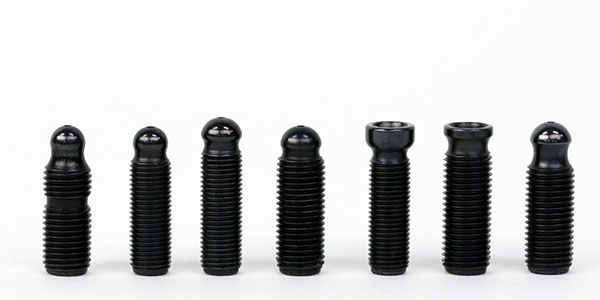
Photo courtesy of Trend Performance
While larger diameter, thicker pushrods add weight to the valvetrain, our experts say weight on the pushrod side has far fewer negative consequences than weight on the valve side of the rockers.
The rocker’s lift ratio multiplies the force of the spring as it pushes back against the rocker as the valve closes. The motion and distance traveled on the valve side of the rocker is also more significant than on the lifter and pushrod side. It is best to reduce weight on the valve side of the rocker with lighter springs and lightweight retainers than to worry about adding weight on the pushrod side with thicker, heavier pushrods.
As rpms go up, the need for stiffer valve springs, stiffer pushrods, and lighter valvetrain components (valves, retainers, and rockers) also increases. Pushrods under load at high engine speed wobble and flex. That’s not good for valvetrain stability, valve timing, or consistent power. Increasing the diameter and wall thickness of the pushrods makes them stronger and stiffer, and more stable.
According to Rhodey, much of the leg work has been done regarding selection because of its Spintron program. Trend has a history of verifying its pushrods using Spintronics from its earliest days. “We still do ongoing Spintronic testing here to this day with new style platforms like the LS motor. Because of the big cubic inch LS motors that have an adjustable valve train, a lot of companies like Jesel have come out with excellent adjustable rocker arm setups that are running very long pushrods from the big cylinder heads that have a bunch of room. It’s nothing to put a half-inch or a 9/16˝ pushrod in these things. With the aid of the Spintron, we have many packages already set up to take the guess work out.”
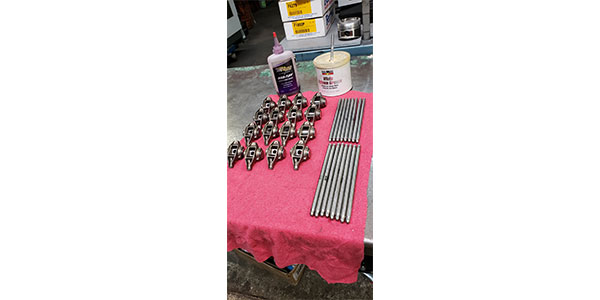
Dieckman says most OEM pushrods feature low-carbon steel tubes and ends, but he sees that material quality is improving for performance applications. “We see a shift to bearing-quality alloy steel such as 52100 material with tool steel ends. In the performance category, our best technology is a one-piece design featuring 4130 chrome-moly seamless tubes and ends. The metallurgy for low-carbon material is essentially unchanged due to its proven benefits. Newer, 52100 steel needs better control, multiple tempers and different heat treat approaches.”
Our pushrod experts say that selecting the right tip (i.e., tool steel, cup style, ball style, etc.) depends on the application, most notably what type of clearance is required between pushrod and rocker, especially between fully open and closed. Insufficient clearance, especially with high rpm, will lead to tip failure. Attention to tip radius and design is also critical.
Some builders prefer to use a .210-degree radius tip in higher lift applications, where rocker arm/pushrod interference can be an issue. Because these applications are typically high rpm, high lift, and high spring pressure, Borer says they do not offer .210 radius in the 1010 material or the .083″ wall performance line. They do, however, offer it in their high-performance Nitro Black line of pushrods with walls ranging from .116˝ (5/16˝ diameter) to .140˝ wall (3/8˝ diameter).
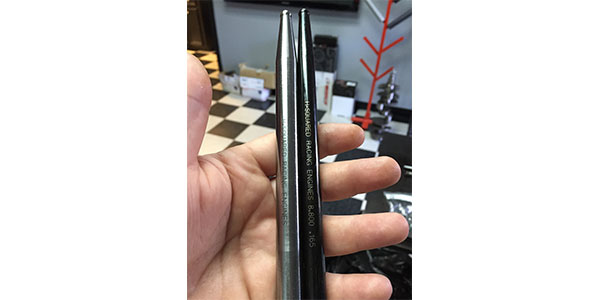
Dieckman says that the engine design dictates tip design. “Your options come in the material; you can upgrade to a tip material that offers better wear resistance.”
While Rhodey says Trend’s 4130 chrome moly pushrod is very popular because it responds well to the heat treatment. It’s very easy to straighten. It’s got excellent resistance to any fatigue or cracking or high heat. He says when it comes to pushrod tips and materials, you want to look at compatibility between all the different rocker arm adjuster manufacturers, taking into account any angularity or some odd geometry.
“The cam lifts these days are just unbelievable. If you’re running an offset lifter and you’ve got a big nasty rocker arm ratio, and then you’re running a one-inch cam lift, you’re pinching oil, you’re your point loading,” he says, “which is why oiling is so crucial.”
Once you heat things up, Rhodey says the adjuster and the pushrod surfaces are heat-treated differently from manufacturer to manufacturer. “So, they can all anneal at different temperatures, too. On a lot of extreme applications, we like to run a tool steel tip, which is H13 hardened and nitrided tool steel. We also have our line of adjusters, and those are each H13 carbon nitrided tool-steel as well. However, there’s a little bit of a proprietary shape on the mating surface. So, there is some science between our pushrod and adjuster that seemingly makes everything very happy.”
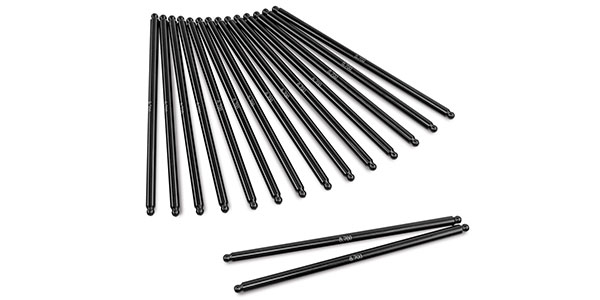
Photo courtesy of Elgin Industries
Rhodey adds that the pushrod is not only a link between valvetrain and the cam; it is also a fail-safe. “You’ve got many ways that a pushrod can break; I mean, detonation, tune up, a broken torque converter, an over-rev in the burnout box. It’s crazy how much load can be transferred to that little piece of metal.”





